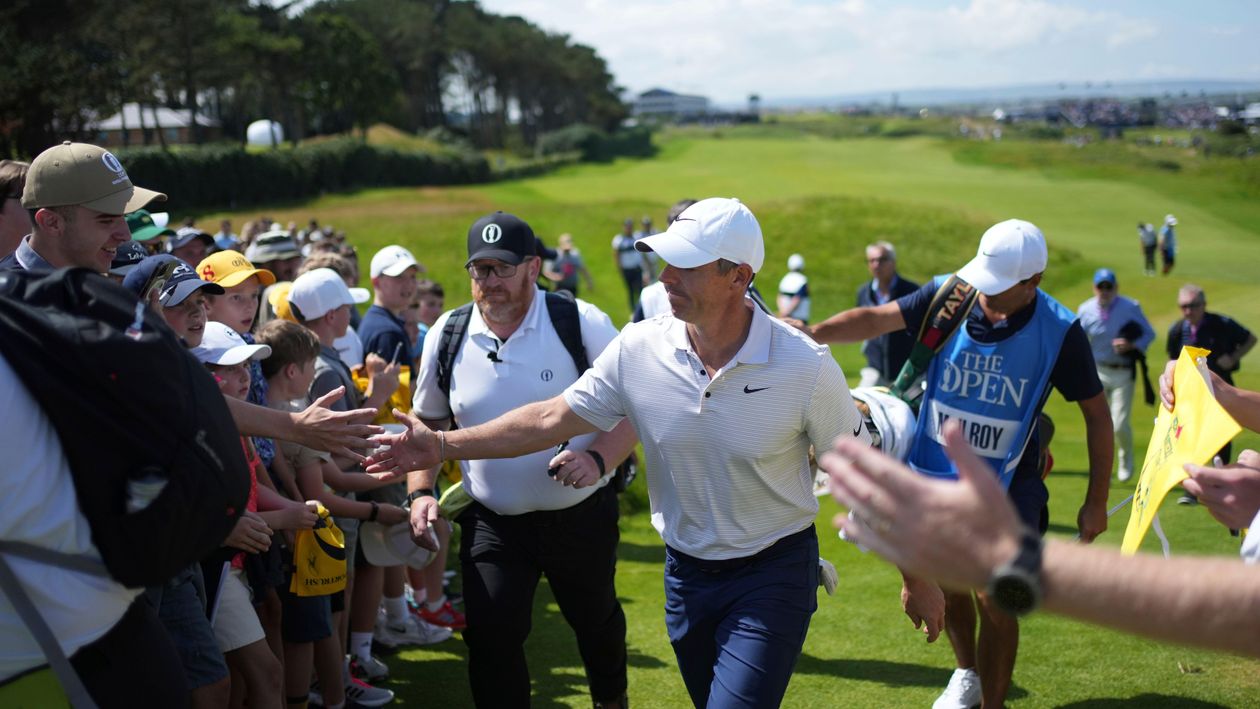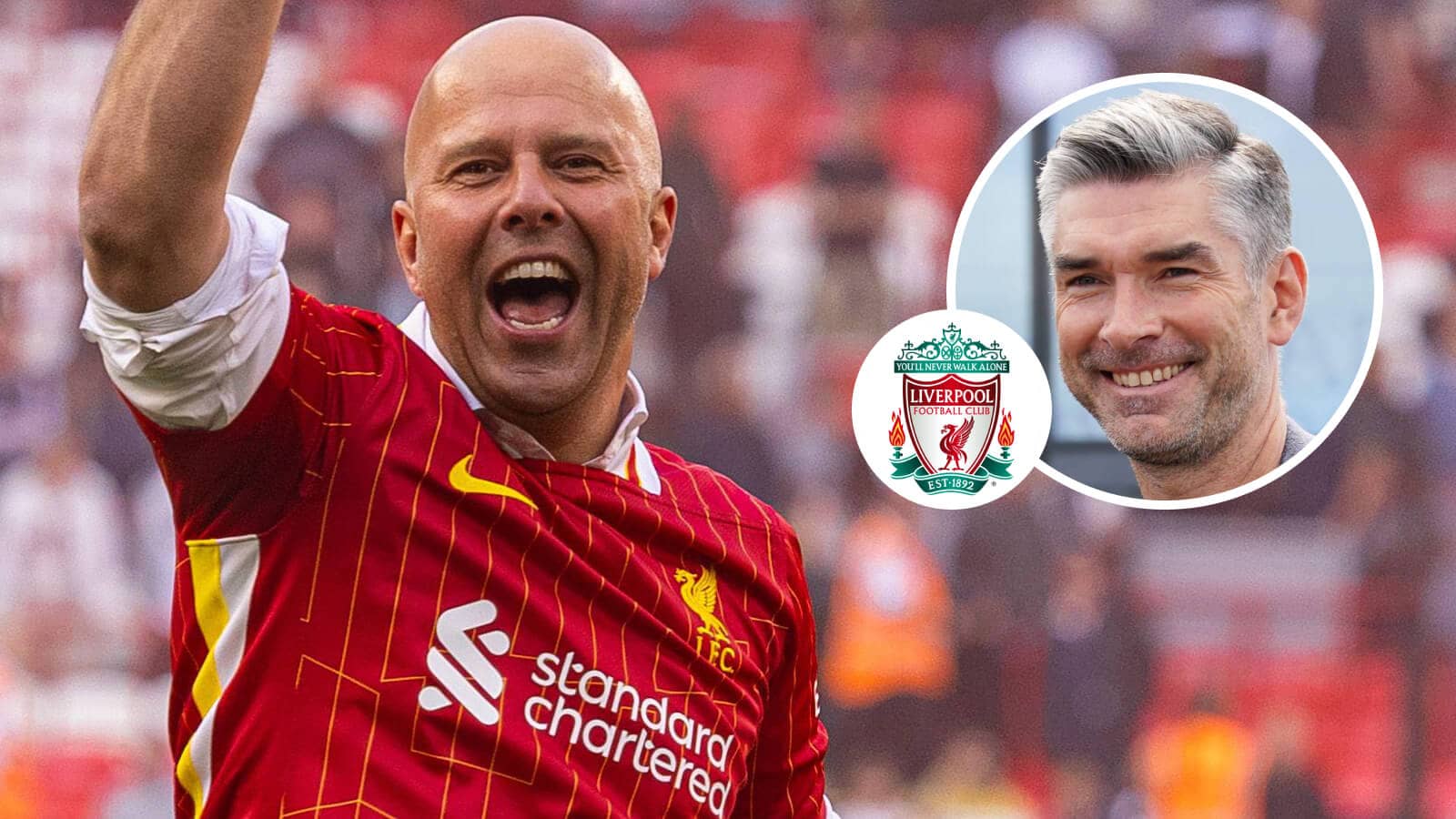CNBC Sport: Why ESPN’s historic streaming launch may actually cost it subscribers

A version of this article first appeared in the CNBC Sport newsletter with Alex Sherman, which brings you the biggest news and exclusive interviews from the worlds of sports business and media. Sign up to receive future editions, straight to your inbox. ESPN is making history Thursday with the launch of its everything-in-one direct-to-consumer product. For the first time ever, consumers can buy ESPN programming without subscribing to the broader pay TV bundle. ESPN wants us to call it National ESPN App Day . I'll let you decide if you want to go that far. ESPN has set its introductory price at $29.99 per month . For consumers willing to pay that, they'll also get ad-supported Disney+ and Hulu thrown in for no extra cost for the first year. The app comes with many new bells and whistles, including tabs around the viewing screen that populate with relevant ESPN fantasy stats for your team's players and bets you've made, if you're using ESPN Bet and live in a state where online sports wagers are legal. Symbolically, ESPN's decision to make its programming available outside of the bundle is the biggest shoe to drop in a multiyear transition from cable TV to streaming. CNBC made a whole mini-documentary last year about ESPN's future that you should watch if you're interested. But as a practical matter in the near term – as a matter of dollars and cents – Thursday's service launch isn't that big of a deal. And it's not meant to be. In fact, ESPN may lose aggregate subscribers with this announcement. Hear me out and give me a second to get there. Analysts largely agree that ESPN's direct-to-consumer product won't attract that many subscribers in its first months or even its first years of existence. LightShed analyst Rich Greenfield predicts ESPN's direct-to-consumer service will have 2 million subscribers by the end of 2025. That doesn't include pay TV subscribers who already pay for ESPN through cable and will be able to access the revamped app with their existing credentials. Wolfe Research analyst Peter Supino estimates ESPN will add 1.75 million direct-to-consumer subscribers this year, ramping up to 3 million by the end of 2026. Research firm MoffettNathanson estimated earlier this year that ESPN would bring in about $300 million in incremental revenue from the new expanded service in its first year. (To be fair, that estimate came before ESPN's most recent announcements, including its deal to house WWE premium live events and a bundle with Fox One for $39.99 per month.) "We see ESPN flagship as more of an extension of ESPN linear and don't see it as a service that will attract lots of standalone subscribers," MoffettNathanson analyst Robert Fishman told me this week. For a longer-term benchmark, analysts at Loop Capital estimate the shift to sports streaming is "in the second inning" and that the new ESPN direct-to-consumer business could be "a $5.6 billion to $6.8 billion business within a couple of years." Thursday's debut isn't about convincing cable subscribers to leave the bundle, and it isn't about convincing cable subscribers to pay a few more bucks for a bolt-on service. That's why ESPN is giving away all of its direct-to-consumer bells and whistles as free features to authenticated cable subscribers. It's why ESPN called its new direct-to-consumer service simply ESPN. And it's also why we're only talking about an ESPN streaming service in 2025 after Disney+ launched in 2019. "When we went into this and ultimately decided we were going to go direct to consumer a few years ago, we recognized internally that it would not serve us to incentivize people to the cord," Pitaro told Business Insider's Peter Kafka in an interview this week. ESPN makes more money than any network – by far – from traditional cable TV. Disney is quite content to keep the cable bundle as large as possible. What this launch is about is replacing ESPN+ as Disney's signature streaming service. ESPN+ customers will become ESPN Select subscribers – the lower tiered version of ESPN. There are about 24 million ESPN+ customers – many of whom subscribe to the service through the Disney bundle of ESPN+, Hulu and Disney+ together for $16.99 per month. The ESPN+ branding will eventually melt away. This is why, in the near term, ESPN may lose more customers than it gains. The unlimited ESPN service that launches Thursday will include everything ESPN+ already has. Over the coming months, ESPN plans to strike deals with large pay TV distributors such as Comcast, Cox and YouTube TV that will give customers access to ESPN's direct-to-consumer product. ESPN already has deals with Charter, DirecTV and Verizon Fios, as I reported earlier this month. (Quick aside – I verified with sources that Comcast, Cox and YouTube TV's carriage deal renewals with Disney are all set for this year. Dish and Disney is next year. Logic would suggest the pay TV providers may have an easier time knocking out a carriage deal with ESPN than normal because both sides should want to give customers authentication access to the ESPN app as soon as possible. It's part of ESPN's promise to subscribers, and it's a pretty nice gift to get from distributors that are already paying for ESPN.) That means that if you're currently an ESPN+ subscriber and you get ESPN from a pay TV operator, you will no longer have any need to pay for ESPN+. I'm not sure how many of the 24 million ESPN+ subs get ESPN via their cable providers today, but I'd imagine it's pretty significant. All of those people will now be able to cancel ESPN+ because they'll be getting it for no extra charge with their cable plan. On the other hand, there are millions of standalone ESPN+ subscribers who may upgrade to the $29.99 per month service, throwing incremental revenue at ESPN. There's also an unknown number of people who don't have ESPN at all who will begin paying $30 a month for the service. But if you believe the analysts – and I think you should – that number is almost certainly pretty small. If ESPN is important enough to you to pay $30 a month for it, chances are you either still subscribe to cable or have been paying for ESPN+. The flagship ESPN launch is all about giving anyone who wants sports content access to what ESPN has to offer, as network head Jimmy Pitaro has said countless times over the past few years – and repeated this week in a demo of the app to a small group of reporters. "The goal is to serve the entire ESPN audience even better – and we will," said Pitaro. The bottom line is ESPN's flagship launch isn't a redux of Disney launching Disney+ in November 2019. Within 24 hours of that debut, 10 million users had signed up to pay $6.99 a month for the streaming service, which gave customers access to Disney's giant catalog of movies for the first time ever. That product was for all U.S. media consumers – regardless of whether a person already subscribed to cable. The "plus" in Disney+ was meant to symbolize that this was an add-on product rather than a replacement service. ESPN needs to pivot to streaming like every other media company. This announcement is historically important because ESPN has been the last to do it, given how much money ESPN makes from traditional pay TV. But with Disney's decision to give the direct-to-consumer service away for no additional cost to cable subscribers, the product's launch likely won't cause an avalanche of cable subscription cancellations. And by charging $30 for it, Disney probably won't generate many millions of new subscribers from the cord-cutter or cord-never world. *** One more note on ESPN — as I reported last week, we're getting closer and closer to an MLB deal for its TV rights. Here's where we stand. ESPN is in talks to license (not acquire) MLB.TV , the league's out-of-market streaming service. It will be interesting to see how ESPN decides to bundle MLB.TV with its new direct-to-consumer service, assuming the deal gets done. ESPN also wants the in-market rights to five teams (the Arizona Diamondbacks, Cleveland Guardians, Colorado Rockies, Minnesota Twins and San Diego Padres) for which MLB produces and distributes games. CNBC reported that last month . And I'll give you a third ESPN nugget. I'm told ESPN also wants midweek national games in this deal. In other words, ESPN will give up Sunday Night regular season games, its Wild Card games and the Home Run Derby. ESPN would then pick up a package of midweek games that MLB will turn into a national package for the next three years, as well as carrying the aforementioned local games. For what it's worth, I'm told NBC Sports is narrowing in on licensing all of the Sunday Night games and the Wild Card games. When there's a conflict between a Sunday Night Baseball game and a Sunday Night Football game, the MLB games will be exclusively on NBC's streaming service Peacock. While Apple may be out on the Sunday games, I don't have any reporting suggesting Apple is out on Friday Night Baseball. On the record With Jessica Berman , the commissioner of the National Women's Soccer League ... This week's CNBC Sport videocast guest is Jessica Berman , the commissioner of the National Women's Soccer League. The NWSL has become a well-known success story among fans of women's sports and soccer. Games routinely top 10,000 in-person attendees, and the league is growing rapidly, expanding to 16 teams next season. Valuations for teams are soaring, with expansion fees jumping from $2 million to $110 million in five years. Still, surprisingly, attendance and TV ratings have slumped for the NWSL in its first half of the season compared to last year. Berman told me she isn't concerned. She said attendance numbers are already bouncing back in the second half. In fact, Bay FC is primed to break the NWSL attendance record on Saturday with its match against the Washington Spirit at Oracle Park in San Francisco. With over 35,000 tickets sold, it will be the most attended event in U.S. women's professional sports history. On the TV side, the data is more complex than meets the eye, Berman said. "You have to look beneath the top-line numbers, because if you look at our composite numbers, inclusive of digital, we're actually up. That's representative of a shift we're seeing in viewing habits for television viewers and fans," Berman said. "We're young, we're technologically savvy, and what that means is that when we provide opportunities for our fans to watch it on their phones or watch it through apps, they're going to find those opportunities, because the majority of our fan base is not the 55+ [crowd] who tends to be watching traditionally." There is one thing Berman is very concerned about – the future of Title IX, the 1972 legislation that ensured equal opportunities for men and women. Berman noted NIL is threatening women's sports by emphasizing high-revenue sports (mainly college football) over smaller women's sports. "I think you would be missing something as an American if you're not worried about that today. I don't think you could find a single person who would say that Title IX is not in jeopardy," Berman said. "With some of the changes in the commercialization of some of the big sports and the introduction of NIL, and what I refer to as the unintended consequences of that, it is my hope and expectation that people are paying attention to that and doing everything they can to protect Title IX – not only because our league and the WNBA has benefited from that, but if you care about the U.S. winning gold medals, if you care about providing opportunities to young girls, you should care about protecting Title IX." You can watch our entire conversation here . Or listen here and follow the CNBC Sport podcast if you prefer the audio version. This week's podcast also comes with a bonus conversation with tennis writer Giri Nathan about his new book "Changeover: A Young Rivalry and a New Era of Men's Tennis," about the rise of Carlos Alcaraz and Jannik Sinner . The book hit stores this week, just in time for the US Open. The men's and women's singles tournaments begin Sunday. It's a great conversation for the tennis fans out there. CNBC Sport highlight reel The best of CNBC Sport from the past week: Sticking with the soccer theme, U.S. investors now own, fully or in part, the majority of soccer teams in England's Premier League. That's caused a surge in valuation among European clubs, reports CNBC's Matt Ward-Perkins . Microsoft has extended a deal with the NFL to provide the league's coaches and players with AI-driven, real-time data and analysis. CNBC's Ali McCadden has the details. Humanoid robot-athletes competed in dance battles, martial arts, track-and-field events and soccer over the weekend in a three-day competition hosted in Beijing. The event brought together 280 teams from 16 countries, including U.S. teams that used robots manufactured by Chinese companies such as Unitree and Booster, reports CNBC's Eunice Yoon . Robinhood keeps delving deeper into sports prediction markets. The online broker announced this week it has made prediction markets for both professional and college football , reports CNBC's Laya Neelakandan . The big number: $188.9 million That's the career prize money earnings for Novak Djokovic , setting the bar for the most money won for any tennis player in history, according to data from OLBG . Djokovic, 38, will be competing for his fifth US Open title next week and a record-breaking 25th major championship. Rafael Nadal is second in career winnings with $134.9 million, followed by Roger Federer at $130.6 million. It's a steep drop down to fourth among the men – Andy Murray – at $64.7 million. If Alcaraz and Sinner keep winning at the pace they're going, it won't be long before they supplant Murray. Alcaraz is currently sixth on the all-time men's list at $47.4 million. Sinner is eighth at $45.7 million. On the women's side, Serena Williams is dominant at No. 1 with $94.8 million. Her sister, Venus, is No. 2 at $42.7 million. Venus will have a chance to add to that next week when she becomes the oldest entrant in the singles bracket since 1981 at age 45. Quote of the week "The purpose of this committee is pretty simple. We're going to design the best professional golf competitive model in the world for the benefit of PGA Tour fans, players and their partners. It is aimed at a holistic re-look of how we compete on the Tour. That is inclusive of regular season, postseason and offseason. We're going to focus on the evolution of our competitive model and the corresponding media products and sponsorship elements and model of the entire sport. The goal is not incremental change. The goal is significant change." — New PGA Tour CEO Brian Rolapp spoke Wednesday at East Lake Golf Club ahead of the 2025 Tour Championship. He's developed a Future Competition Committee that will be chaired by Tiger Woods to redefine "the optimal competitive model that enhances the PGA Tour's value to fans, players and partners." The committee is made up of six players – Woods, Patrick Cantlay , Adam Scott , Camilo Villegas , Maverick McNealy and Keith Mitchell – and three "business" leaders, including PGA Tour Enterprises Chairman Joe Gorder, Fenway Sports Group principal owner John Henry and Theo Epstein , a senior advisor to Fenway Sports Group. In 2024, a consortium of U.S. sports team owners led by Henry's FSG invested up to $3 billion in PGA Tour Enterprises, a commercial venture under the PGA Tour's control. Around the league ESPN and WWE made a surprise announcement Wednesday, revealing that Wrestlepalooza – one of WWE's premium live events – will stream on ESPN's direct-to-consumer platform on Sept 20. Previously, the companies said WWE PLEs would begin on ESPN in 2026. Now, ESPN will become the exclusive U.S. domestic home of all WWE PLEs immediately. Additional upcoming WWE PLEs this year include "Crown Jewel" on Oct. 11, and "Survivor Series" on Nov. 29. These events had previously streamed exclusively on Peacock. If you've never seen our long-form production about Golden State Warriors star Steph Curry and his business aspirations, please check your CNBC On Demand listings or watch a portion of our interview here . We have an update for the story this week – Curry has struck a long-term strategic partnership with Google. Curry will become Google's new "Performance Advisor," in partnership with Google Health, Google Pixel and Google Cloud "to test our new products and experiences," Google said in a blog post. Another reminder that while the RSN model is broken, it's not a death spiral for popular teams that win. TV viewership for New York Yankees games on the YES Network is up 5% year-over-year , according to Nielsen data. Nexstar's $6.2 billion deal this week to acquire Tegna will bring together local sports media assets to create a larger-scale player when it comes to future negotiations, reports Front Office Sports .













